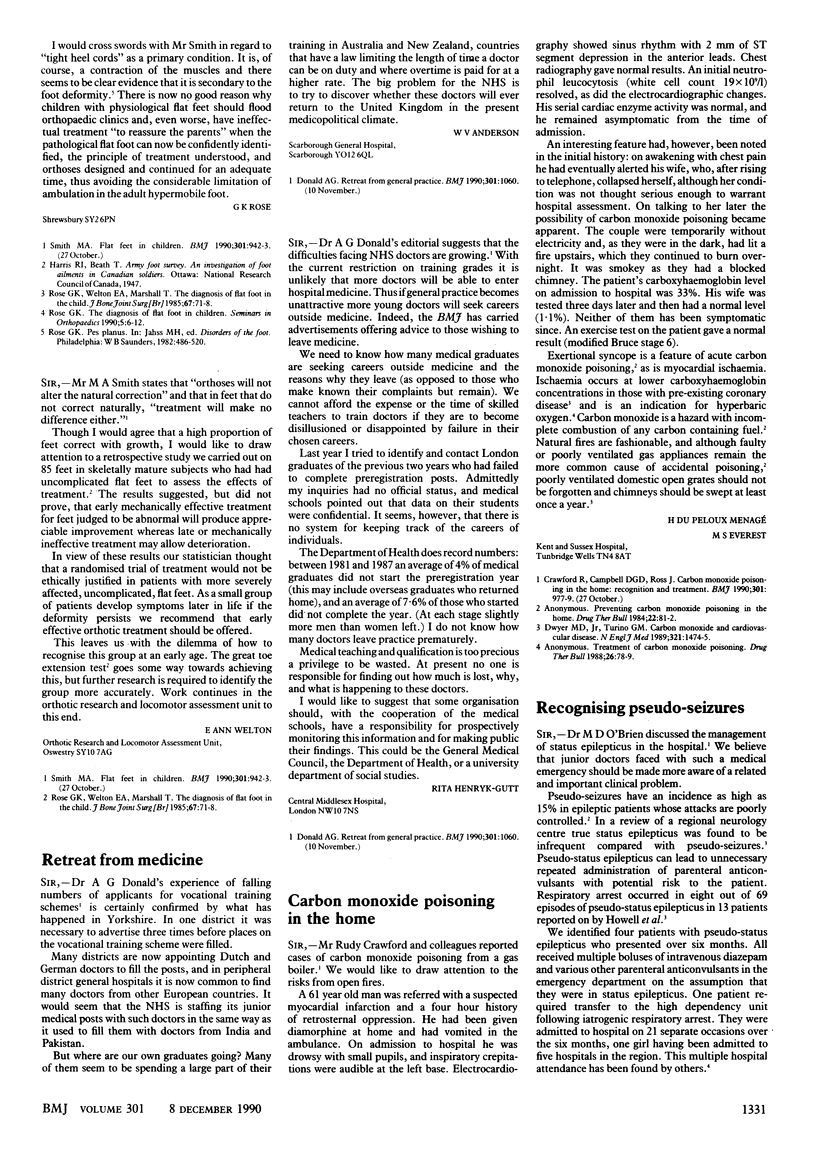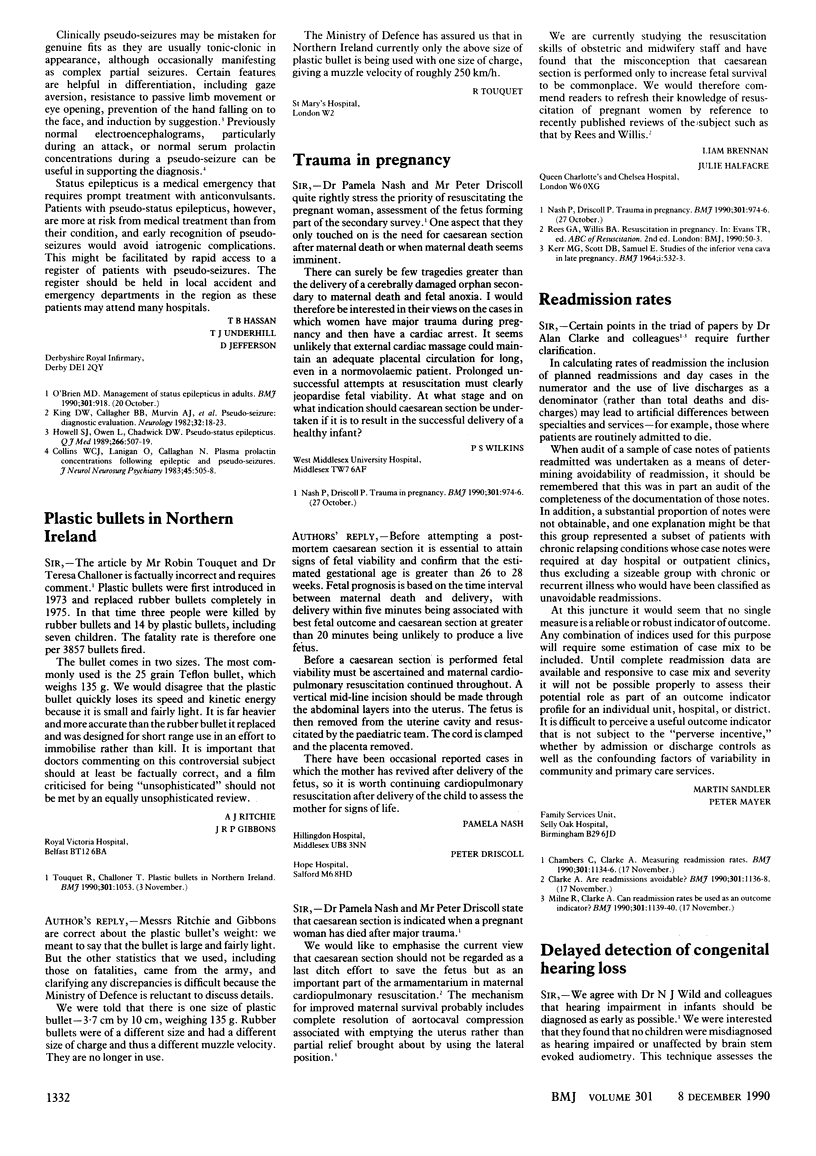Full text
PDF

Selected References
These references are in PubMed. This may not be the complete list of references from this article.
- Collins W. C., Lanigan O., Callaghan N. Plasma prolactin concentrations following epileptic and pseudoseizures. J Neurol Neurosurg Psychiatry. 1983 Jun;46(6):505–508. doi: 10.1136/jnnp.46.6.505. [DOI] [PMC free article] [PubMed] [Google Scholar]
- Howell S. J., Owen L., Chadwick D. W. Pseudostatus epilepticus. Q J Med. 1989 Jun;71(266):507–519. [PubMed] [Google Scholar]
- King D. W., Gallagher B. B., Murvin A. J., Smith D. B., Marcus D. J., Hartlage L. C., Ward L. C., 3rd Pseudoseizures: diagnostic evaluation. Neurology. 1982 Jan;32(1):18–23. doi: 10.1212/wnl.32.1.18. [DOI] [PubMed] [Google Scholar]
- O'Brien M. D. Management of major status epilepticus in adults. BMJ. 1990 Oct 20;301(6757):918–918. doi: 10.1136/bmj.301.6757.918. [DOI] [PMC free article] [PubMed] [Google Scholar]


